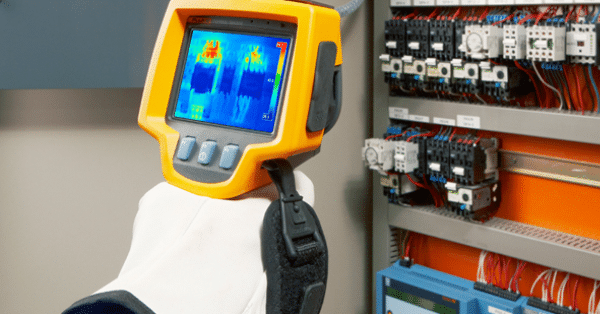What’s the cost of machine downtime in the factory environment? It depends on how you calculate it.
Lost production, labor costs for idled workers, inventory expenses — these are all direct costs. But there are indirect costs, too, that can be even more devastating… including loss of customer confidence. Your costs will depend on your company’s unique circumstances, but most manufacturing professionals would agree that machine downtime should be kept to an absolute minimum. And for decades now, preventive maintenance (PM) has been the go-to strategy to avoid costly downtime.
What is preventive maintenance?
Preventive maintenance is regularly scheduled service based on time and usage. For example, parts ABC will be replaced on the XYZ machine after it has been in service for 1,000 hours or every six months. The PM strategy is typically more effective than replacing parts when they break and disrupt production.
At least, that’s the assumption. But there are costs associated with PM. It takes machines offline and involves labor expenses for the necessary maintenance work—even when it is scheduled to minimize disruption. The cost incurred by these issues begs the question: does a schedule built around time and usage make sense?
It did once when time and usage statistics were all we had to work with in scheduling maintenance. But thanks to the increasing availability of data, we have more options today. Now maintenance managers have access to real-time information on the health and performance of their machines. This higher data availability has given rise to a more advanced strategy: predictive maintenance, or PdM. With PdM, factories can detect and anticipate potential machine failures, helping to protect worker safety, maintain uptime and contribute to production goals.
Predictive maintenance tools
A predictive maintenance strategy is made possible through several types of technology, including:
- Sensors: Sensors are embedded within critical machinery to detect abnormal fluctuations in temperature, vibration, balance, lubricant or water flow and more. While vibration and temperature changes are common precursors to equipment failure, other critical components may have different parameters that should be measured.
- Ultrasound Devices: Ultrasound devices can detect leaks from pressurized systems, which sometimes produce sounds that cannot be detected by the human ear. Ultrasonic detection can identify fissures immediately before they become dangerous and costly.
- Thermography: Thermography uses infrared inspection to monitor the flow of heat through electrical components. When parts begin to deteriorate, the temperature will rise as electrical resistance increases. Thermographic testing can reveal these temperature variations instantly, allowing you to take action. As more data is collected over time, you will have a more accurate picture of exactly when maintenance is required.
- Fluid Analysis: Fluid analysis, focused on lubricating oil, uses regular visual examination, fluid chemical property inspection and wear investigation to determine when oil changes are required. Rather than a time or usage-based approach, fluid analysis ensures that oil is replaced right when it needs to be — no earlier and no later. This can reduce waste, increase uptime, extend machine life and ultimately improve performance.
These technologies can let us know how machines are performing — and accurately predict problems before they occur.
So, how can predictive maintenance tools improve operations over a traditional preventive maintenance strategy? Predictive maintenance can help factories save in two ways.
There are a host of other advantages to adopting a predictive maintenance strategy over a preventive maintenance approach. They include the ability to manage work orders more effectively, improve safety, reduce liability exposure and plan equipment replacement more efficiently.
Companies have become more data-driven across the board, and the benefits of a data-centered approach have improved virtually all facet of operations, from marketing and sales, to product development, to supply chain management. Doesn’t it make sense to use data to modernize maintenance operations too?
If you’re interested in exploring a transition to predictive maintenance, download our white paper here or contact us today to learn how much money you could save with a predictive maintenance strategy.






